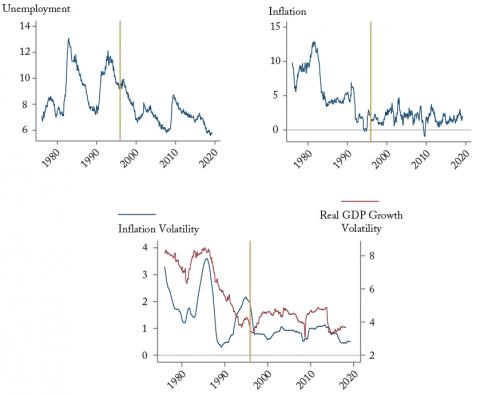From: Jeremy M. Kronick and William B.P. Robson
To: Bill Morneau, Minister of Finance
Date: July 2, 2019
Re: Senate Inquiry into Bank of Canada Act
Recently, a group of economists urged you to add a “maximum employment” target to the Bank of Canada’s current goal of maintaining inflation at 2 percent.
You should respectfully decline.
The Bank of Canada Act already refers to, among other goals, mitigating fluctuations in employment, and promoting the economic and financial welfare of Canada. The 2 percent inflation target translates that mandate into a specific goal for which Canadians can hold the Bank accountable. Adding employment as a goal will muddy understanding of what monetary policy can do, and could undermine one of Canada’s signature economic successes.
These economists believe a focus on inflation control hurts jobs. We have nearly a quarter century of targeting 2 percent inflation to see if that charge is plausible. Consider first the unemployment rate before and after the Bank of Canada began targeting 2 percent inflation at the end of 1995 (first panel of figure). Unemployment has been lower – peaks, troughs and on average – and less volatile over the last quarter century than before it.
Is this better performance mere chance? We don’t think so. The Bank of Canada targets low inflation by influencing money, interest rates and spending to stabilize activity around the Canadian economy’s productive capacity. It is also likely that low inflation creates conditions for fuller, better uses of all our economic resources, including labour.
Might the future be different? After so many years of low inflation, historical correlations between activity, productive capacity and inflation may have changed. But a looser, or even no, relationship between activity and inflation would make a dual goal less, not more, palatable. If the link is loose, or broken, how would the Bank of Canada weigh inflation against employment, or choose between them?
Moreover, “maximum employment” is not a target like 2 percent inflation. People are unemployed for many reasons, including when they are changing jobs. Different people work different hours at different times. Minimum wages, workplace regulations and many other government policies affect employment. The Bank of Canada cannot control those: making it formally responsible will undermine its credibility and potentially its performance as well.
What monetary policy can do is target prices. How has the Bank done on that front? Inflation has been lower since 1995 – no surprise there (second panel of figure). And, equally unsurprising, the volatility of inflation has been lower, as has the volatility of economic growth (third panel of figure). This happy coincidence is not unique to Canada: other countries that became inflation targeters over the last 35 years have also done relatively well (see Parkin 2016).
The impact of a policy change on important economic variables is rarely so clear as in the case of inflation-targeting. The Bank of Canada’s inflation targeting has improved the economic environment for Canadians – lower and more stable inflation and growth, and lower unemployment to boot.
Central banks need clear, easy to communicate targets. The Bank of Canada’s 2 percent inflation target has proved effective in delivering on its mandate to improve Canada’s economic welfare. Don’t fix what ain’t broke.
Jeremy M. Kronick is Associate Director, Research of the C.D. Howe Institute where William B.P. Robson is President and CEO.
To send a comment or leave feedback, email us at blog@cdhowe.org.
The views expressed here are those of the authors. The C.D. Howe Institute does not take corporate positions on policy matters.






